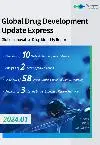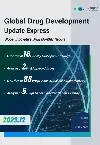Roche’s persistence pays off as Brainshuttle programme shows plaque-clearing prowess in Alzheimer’s
12 Mar 2024
Clinical ResultPhase 2Phase 3Drug Approval
Third time may be the charm for Roche’s efforts to develop an anti-amyloid beta monoclonal antibody (mAb) to treat Alzheimer’s disease (AD). After shuttering two high-profile programmes in as many years, the Swiss drugmaker shared mid-stage data for a third candidate that suggest this time, it may have cracked the blood-brain-barrier code.
At a neurology-focused investor event on Monday, Roche unveiled early Phase II data for trontinemab, a beta-amyloid-targeting antibody, which demonstrated a rapid rate of plaque clearance that could rival Eisai and Biogen’s approved mAb Leqembi (lecanemab), as well as donanemab from Eli Lilly, which is under FDA review.
“Alzheimer’s has traditionally been a difficult area,” SVP Paulo Fontoura said during the event. “I think we possibly have turned a corner in the past couple of years with these first approvals, and that also sets us up with trontinemab to really develop something better than what exists right now. So in some ways the door is opening and it’s an opportunity for us.” Fontoura serves as global head of neuroscience, immunology, ophthalmology, cardiometabolic, infectious and rare diseases clinical development at Roche.
AD setbacks
The positive data are a refreshing change of pace for Roche, which has seen several recent amyloid antibody failures.
In January, Roche’s Genentech unit returned a pair of mAbs to AC Immune after neither candidate showed a functional benefit in early AD across a series of mid- and late-stage studies. Genentech had in-licensed anti-amyloid beta mAb crenezumab in 2006, and the tau-targeting candidate semorinemab in 2012.
And in 2022, Roche halted development of its internally developed amyloid programme gantenerumab after it failed a pair of Phase III studies.
Brain-penetrating boost
Trontinemab, the compound highlighted by Roche on Monday, is a reformulation of gantenerumab. Thanks to the pharma’s Brainshuttle technology, trontinemab can bind to transferrin receptors on endothelial cells to smoothly cross the blood-brain-barrier and then home in on amyloid-beta plaques in the brain.
Bonni, global head of neuroscience & rare diseases in the company's Pharma Research and Early Development (pRED) division. While standard mAbs have to cross the blood-brain-barrier where it’s thinnest, trontinemab can pass through at any affected region by utilising the brain’s dense capillary network.
“From a pharmacological approach, this technology allows us to get higher exposure, superior targeting, engagement and a broader distribution in the brain,” Bonni said.
Quick plaque clearance
So far, the Brainshuttle technology does seem to have boosted the antibody’s plaque-attacking abilities.
Roche shared data from a dose escalation Phase II trial that enrolled people who are amyloid-positive, and have either mild cognitive impairment due to AD or were in the early stages of the disease, to receive a trontinemab injection every four weeks.
The pharma had previously disclosed that the 1.8 mg/kg dose cohort saw a mean amyloid reduction of 84 centiloid units (CLs) at week 28.
On Monday, Roche revealed data from the 3.6 mg/kg dose cohort, which experienced a mean reduction of 91 CLs by week 12 – a greater reduction in less than half the time of the smaller dose. Of eight evaluable patients, five were amyloid-negative.
The rapid, three-month clearance of brain amyloid plaques – defined as achieving plaque levels of
“The take-home message from these data, from these results, is that trontinemab is moving a lot of amyloid in a short period of time, which is really quite remarkable,” Bonni said.
The speed of clearance may be related to the impact an anti-amyloid antibody has on functional endpoints. “What we have learned is that the faster and the deeper that you bring down amyloid, the more likely there’s a correlation in all of these studies in terms of an effect on the clinical point,” he added.
A safety edge
Furthermore, the 3.6 mg/kg-dose arm saw no cases of amyloid-related imaging abnormalities (ARIA), which Bonni called “remarkable.”
In comparison, Leqembi’s label includes a boxed warning of ARIA. For donanemab, ARIA was the most common treatment-emergent adverse event, with modestly higher incidence rates than Leqembi, which may be one of the reasons behind the FDA’s recent about-face to require an advisory committee meeting for the mAb. For more, see Spotlight On: Last minute AdCom for Eli Lilly’s donanemab raises eyebrows.
Bonni acknowledged, however, that the trontinemab trial still has a ways to go to confirm the data. Roche plans to expand the dose cohorts with the most promising results and enrol around a couple hundred patients in each.
For more details,please visit the original website
The content of the article does not represent any opinions of Synapse and its affiliated companies. If there is any copyright infringement or error, please contact us, and we will deal with it within 24 hours.
Organizations
Targets
Drugs
Hot reports
Get started for free today!
Accelerate Strategic R&D decision making with Synapse, PatSnap’s AI-powered Connected Innovation Intelligence Platform Built for Life Sciences Professionals.
Start your data trial now!
Synapse data is also accessible to external entities via APIs or data packages. Leverages most recent intelligence information, enabling fullest potential.





